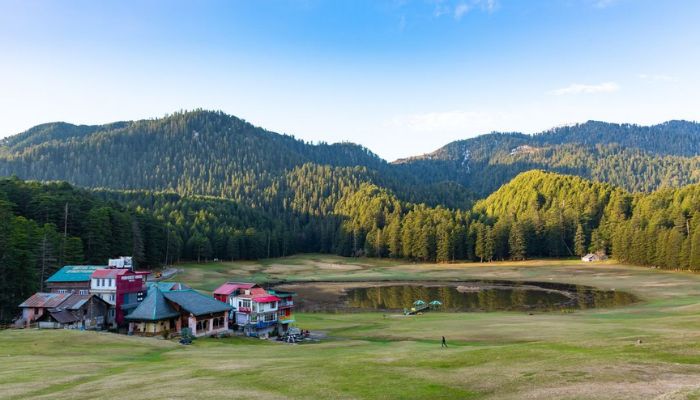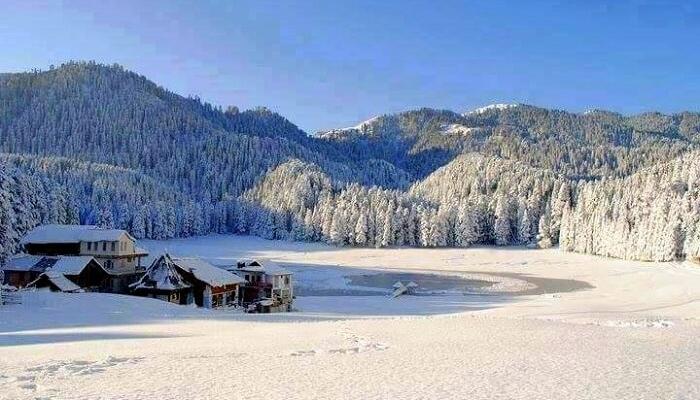India is a land of stunning beauty and incredible diversity. From the snowy peaks of the Himalayas to the sunny beaches of the south, it offers a feast for the eyes. You can find lush green valleys, vast deserts, and sparkling blue rivers all in one country. It truly is a place of natural wonders that can take your breath away. Many areas in India are often compared to famous international destinations. They have the same kind of beautiful scenery, the same peaceful atmosphere, and the same charm.

Do you know there is a specific place in India that is often called the "Switzerland of India"? A place with rolling green meadows, towering mountains, and crystal-clear lakes that remind everyone of a famous European country? In this article, we'll take a look at this beautiful destination, reveal its name, and explore what makes it so special and deserving of this wonderful title.
ALSO READ| Which River is Known as the Lifeline of Jammu and Kashmir?
Which Place Is Known As The Switzerland Of India?

The place famously known as the "Mini Switzerland of India" is Khajjiar. This picturesque saucer-shaped plateau is nestled in the Chamba district of Himachal Pradesh, approximately 24 km from Dalhousie, resting in the foothills of the majestic Dhauladhar ranges. Khajjiar got its famous nickname on July 7, 1992. On that day, Swiss Envoy Willy P. Blazer officially called it one of the 160 places worldwide known as "Mini Switzerland" because it looks so much like Switzerland.
10 Lesser-Known Facts About Khajjiar
- Khajjiar is officially one of the 160 locations worldwide that bear a topographical resemblance to Switzerland, a fact confirmed by the Swiss government.
- It is situated at an approximate elevation of 1,920 metres (6,300 feet) above mean sea level, influencing its climate and vegetation.
- Located in the Chamba district, the region falls under the highly active Seismic Zone V, indicating a high risk of earthquakes due to tectonic plate movement.
- When Khajjiar was named "Mini Switzerland", Swiss Envoy Willy P. Blazer took a stone from Khajjiar, and it was incorporated into a stone collage near the Swiss Parliament in Bern, the capital of Switzerland.
- A yellow Swiss hiking footpath sign, erected by the Swiss Envoy, marks Khajjiar's distance from Bern as 6,194 km.
- The small Khajjiar Lake at the heart of the meadow has a unique feature: a small floating island of reeds and grass that constantly changes position.

- The Khajjiar Lake is generally considered a relic of a small, shallow glacial lake or depression that collected snowmelt and rainwater over millennia.
- The surrounding forest is dominated by the Himalayan Deodar (Cedrus deodara), an evergreen coniferous species native to the Western Himalayas.
- The town derives its name from the ancient Khajji Nag Temple, dedicated to the serpent god, Khajji Nag, located near the lake and dating back to the 10th-12th century.
- The Khajji Nag Temple showcases a rare blend of Hindu and Mughal architectural styles in its intricate wooden carvings.
- Nearby lies the famous "Panch Pandav" tree, a deodar tree known for its exceptional girth and a cluster of six shoots at its base, earning it a mythological name.

- On a clear day, Khajjiar offers spectacular panoramic views of the sacred Mount Kailash (part of the Manimahesh Kailash Peak) in the distance.
- Khajjiar meadow lies within the Kalatop Khajjiar Wildlife Sanctuary, which is rich in Himalayan flora and fauna, including the Himalayan Black Marten.
- The Dhauladhar range, which overlooks Khajjiar, is primarily composed of granitic and gneissic rocks characteristic of the Lesser Himalayan Crystalline Sequence.
- The extensive Deodar forest acts as a significant carbon sink, absorbing atmospheric carbon dioxide and contributing to regional climate regulation.
- Being on the windward side of the Dhauladhar range, the area receives heavy monsoon precipitation (orographic rainfall), resulting in lush greenery.
WHAT'S NEXT| List of 10 Countries with No Rivers
Comments
All Comments (0)
Join the conversation